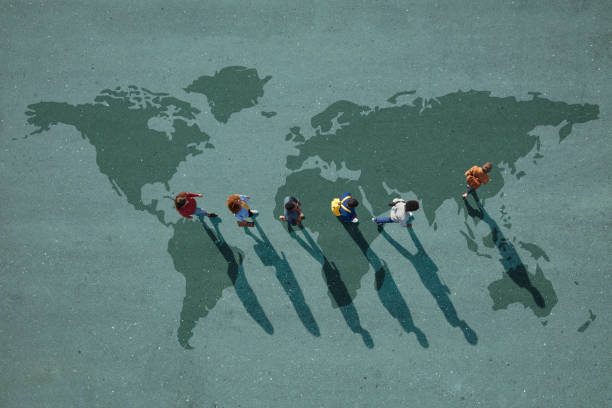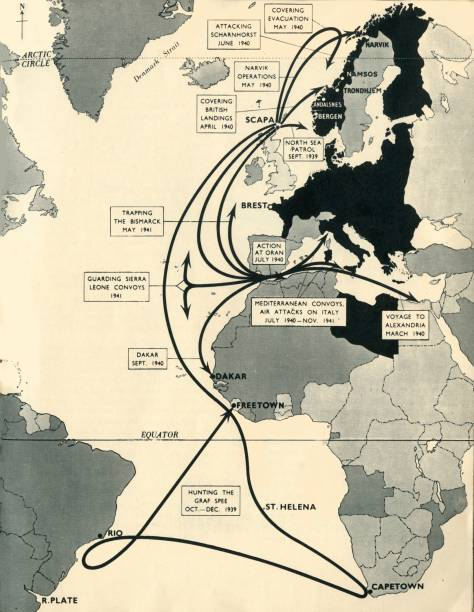Markets Shift East: South Africa’s Quiet Turn to Asia

A New Horizon for Trade
For decades, South Africa’s trade routes have largely followed the familiar patterns set in the years after its economic opening to the world. Europe remained a trusted customer, the United States an occasional strategic partner, and regional neighbors in Africa steady, if modest, markets. But the tides of global commerce are shifting, and South Africa, like a ship adjusting its sails to a changing wind, is charting a new course — this time toward the vast and growing economies of Asia.
This shift is not a sudden leap into the unknown. Rather, it is the product of years of evolving trade data, shifting diplomatic ties, and the sobering realities of global demand. The story is not just about exports, but about a country redefining its place in a rapidly changing global economy.
The Weight of History in South African Trade
South Africa’s trade history cannot be divorced from its political and cultural backdrop. For much of the 20th century, the country’s exports were dictated not by pure economics, but by the geopolitics of isolation and later, reintegration. During the apartheid era, sanctions curtailed trade with much of the world, forcing limited and sometimes covert partnerships. The post-1994 democratic transition opened doors to Europe, the Americas, and re-energized trade across Africa.

SOURCE: gettyimages
Europe, in particular, became South Africa’s primary export market — drawn to its gold, diamonds, wine, and later, manufactured goods. But as Europe faced its own economic stagnation and shifting priorities, South African exporters began to notice opportunities emerging further east. Nations like China, India, South Korea, and Vietnam were no longer simply “emerging markets” — they had become central engines of global growth.
Asia’s Pull: Opportunity Meets Necessity
The redirection toward Asia is not just a matter of preference; it is a matter of survival in an increasingly competitive global economy. China’s appetite for minerals like iron ore, manganese, and platinum has grown sharply in the past two decades. India’s growing middle class has developed a taste for South African wines, citrus, and luxury products. Vietnam and Indonesia, with their expanding manufacturing bases, are hungry for raw materials to fuel production.

SOURCE: gettyimages
Global economic data tells the story in numbers: trade with Asia has doubled in value over the past decade, while exports to Europe have plateaued or even declined in certain sectors. South African ports like Durban and Ngqura now see more vessels bound for Singapore, Shanghai, and Mumbai than for Hamburg or Rotterdam.
The economic logic is compelling. Asia’s growth rates often dwarf those of Europe, and its consumer markets are expanding, not contracting. In an era where commodity prices fluctuate wildly, diversifying trade partners provides a layer of stability for South Africa’s export-dependent economy.
More Than Minerals: Expanding the Export Portfolio
One common misconception is that South Africa’s trade with Asia is entirely about raw minerals. While resources remain a significant share, the export basket has become increasingly diverse. Agricultural goods — from table grapes to rooibos tea — have found eager buyers in Asian markets. Automobiles manufactured in South Africa, particularly in the Eastern Cape, are now shipped to Asian cities where middle-class demand for reliable vehicles is booming.

SOURCES: gettyimages
Even services are starting to play a role. Tourism from Asia to South Africa is on the rise, creating opportunities for reciprocal trade in hospitality and cultural products. This is where the shift becomes not just a matter of economics, but of cultural exchange — a slow weaving together of markets, people, and ideas.
The Challenges of Realignment
No redirection in trade comes without friction. Logistically, South Africa’s infrastructure must adapt to the increased eastward focus. Shipping routes, port efficiency, and cold storage capacity for agricultural goods must all meet the high standards expected by Asian importers.
Diplomatically, South Africa must navigate the delicate balancing act of deepening economic ties with Asia without alienating longstanding Western partners. The political optics matter — especially in a world where trade decisions often carry geopolitical undertones.
There is also the matter of competition. Australia, Brazil, and several African neighbors are equally eager to supply Asia’s markets. For South Africa to maintain an edge, it must not only offer competitive prices but also ensure consistent quality and reliability.
A Continental Ripple Effect
South Africa’s pivot toward Asia is not happening in isolation. As the continent’s most industrialized economy, its trade patterns often set trends for others. Already, countries like Kenya, Nigeria, and Ethiopia are strengthening trade relationships with Asian nations, particularly China and India. This could herald a broader reorientation of African trade toward the East — a shift with far-reaching consequences for global supply chains.
In this sense, South Africa’s choices are not merely about national interest, but about shaping the future economic map of Africa. If the pivot succeeds, it could accelerate a continental realignment toward the Asian century — one in which African economies find greater agency in global trade.
Beyond Economics: The Cultural and Strategic Dimensions
Trade is never just about goods. It is about trust, relationships, and the perception of mutual benefit. South Africa’s growing engagement with Asia has cultural implications — from student exchange programs to joint business ventures. Over time, these relationships could influence everything from technological cooperation to diplomatic stances in global forums.
Strategically, this realignment could also position South Africa as a bridge between Africa and Asia. Its membership in BRICS (alongside China and India) already provides a platform for economic diplomacy, and a deeper focus on Asia could amplify its influence in shaping South-South cooperation.
The Road Ahead
The pivot toward Asia will not be without setbacks. Global economic slowdowns, shifts in demand, and political disagreements can quickly disrupt even the best-laid trade strategies. However, the underlying logic remains sound: in a multipolar world, relying on a single region for trade is a vulnerability. Diversification is both an economic necessity and a strategic advantage.
For South Africa, the challenge will be to deepen its foothold in Asia while continuing to honor its commitments to other global partners. If done well, the country could emerge not just as an exporter of goods, but as a central player in the 21st-century trade landscape — a nation whose routes to Asia carry not only cargo, but the promise of shared growth.
Recommended Articles
There are no posts under this category.You may also like...
Super Eagles' Shocking Defeat: Egypt Sinks Nigeria 2-1 in AFCON 2025 Warm-Up

Nigeria's Super Eagles suffered a 2-1 defeat to Egypt in their only preparatory friendly for the 2025 Africa Cup of Nati...
Knicks Reign Supreme! New York Defeats Spurs to Claim Coveted 2025 NBA Cup

The New York Knicks secured the 2025 Emirates NBA Cup title with a 124-113 comeback victory over the San Antonio Spurs i...
Warner Bros. Discovery's Acquisition Saga: Paramount Deal Hits Rocky Shores Amid Rival Bids!

Hollywood's intense studio battle for Warner Bros. Discovery concluded as the WBD board formally rejected Paramount Skyd...
Music World Mourns: Beloved DJ Warras Brutally Murdered in Johannesburg

DJ Warras, also known as Warrick Stock, was fatally shot in Johannesburg's CBD, adding to a concerning string of murders...
Palm Royale Showrunner Dishes on 'Much Darker' Season 2 Death

"Palm Royale" Season 2, Episode 6, introduces a shocking twin twist, with Kristen Wiig playing both Maxine and her long-...
World Cup Fiasco: DR Congo Faces Eligibility Probe, Sparks 'Back Door' Accusations from Nigeria

The NFF has petitioned FIFA over DR Congo's alleged use of ineligible players in the 2026 World Cup playoffs, potentiall...
Trump's Travel Ban Fallout: African Nations Hit Hard by US Restrictions

The Trump administration has significantly expanded its travel restrictions, imposing new partial bans on countries like...
Shocking Oversight: Super-Fit Runner Dies After Heart Attack Symptoms Dismissed as Heartburn

The family of Kristian Hudson, a 'super-fit' 42-year-old marathon runner, is seeking accountability from NHS staff after...
